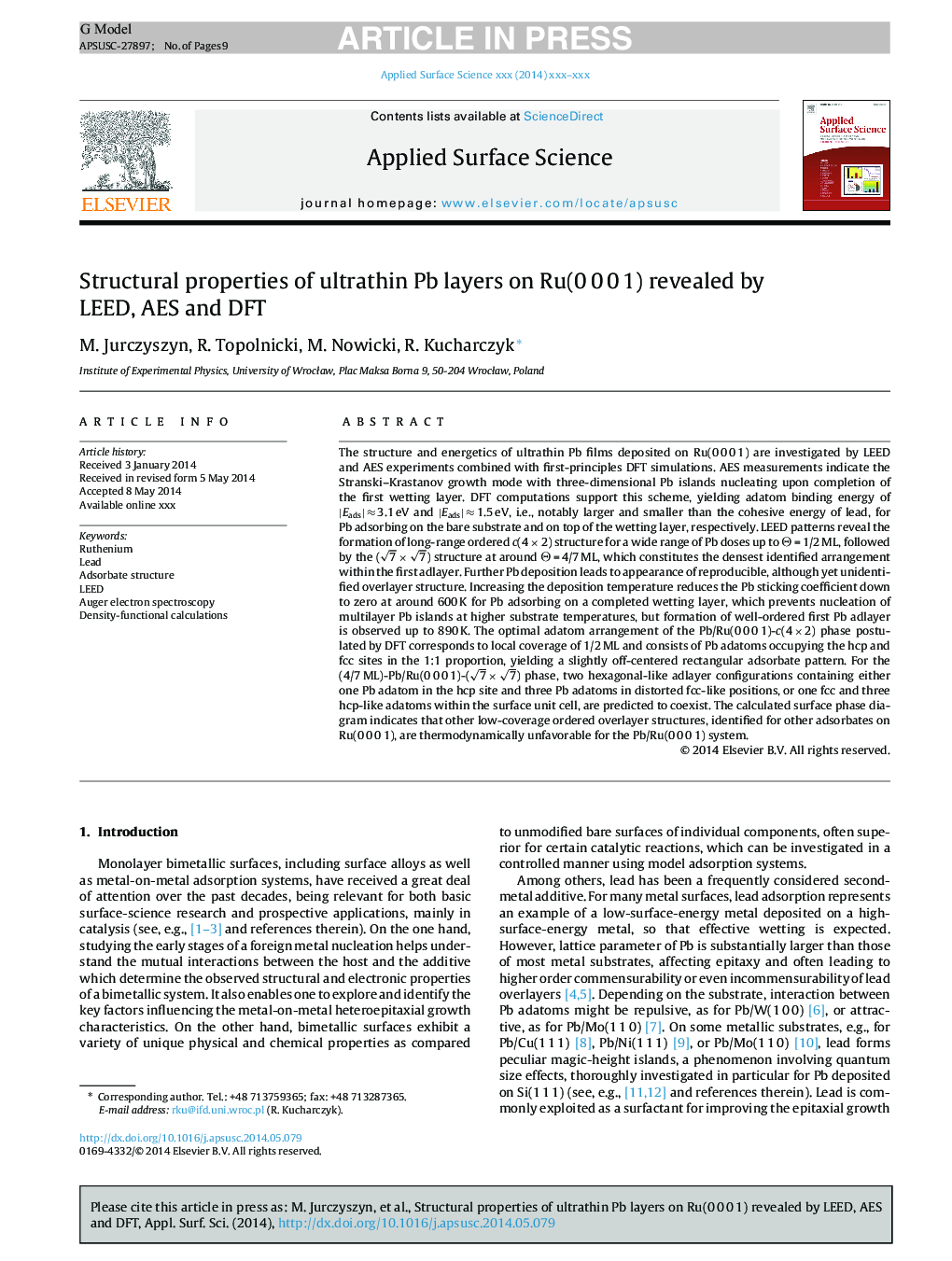| کد مقاله | کد نشریه | سال انتشار | مقاله انگلیسی | نسخه تمام متن |
|---|---|---|---|---|
| 5361370 | 1503653 | 2014 | 9 صفحه PDF | دانلود رایگان |
عنوان انگلیسی مقاله ISI
Structural properties of ultrathin Pb layers on Ru(0Â 0Â 0Â 1) revealed by LEED, AES and DFT
دانلود مقاله + سفارش ترجمه
دانلود مقاله ISI انگلیسی
رایگان برای ایرانیان
کلمات کلیدی
موضوعات مرتبط
مهندسی و علوم پایه
شیمی
شیمی تئوریک و عملی
پیش نمایش صفحه اول مقاله

چکیده انگلیسی
The structure and energetics of ultrathin Pb films deposited on Ru(0 0 0 1) are investigated by LEED and AES experiments combined with first-principles DFT simulations. AES measurements indicate the Stranski-Krastanov growth mode with three-dimensional Pb islands nucleating upon completion of the first wetting layer. DFT computations support this scheme, yielding adatom binding energy of |Eads| â 3.1 eV and |Eads| â 1.5 eV, i.e., notably larger and smaller than the cohesive energy of lead, for Pb adsorbing on the bare substrate and on top of the wetting layer, respectively. LEED patterns reveal the formation of long-range ordered c(4 Ã 2) structure for a wide range of Pb doses up to Π= 1/2 ML, followed by the (7Ã7) structure at around Π= 4/7 ML, which constitutes the densest identified arrangement within the first adlayer. Further Pb deposition leads to appearance of reproducible, although yet unidentified overlayer structure. Increasing the deposition temperature reduces the Pb sticking coefficient down to zero at around 600 K for Pb adsorbing on a completed wetting layer, which prevents nucleation of multilayer Pb islands at higher substrate temperatures, but formation of well-ordered first Pb adlayer is observed up to 890 K. The optimal adatom arrangement of the Pb/Ru(0 0 0 1)-c(4 Ã 2) phase postulated by DFT corresponds to local coverage of 1/2 ML and consists of Pb adatoms occupying the hcp and fcc sites in the 1:1 proportion, yielding a slightly off-centered rectangular adsorbate pattern. For the (4/7 ML)-Pb/Ru(0 0 0 1)-(7Ã7) phase, two hexagonal-like adlayer configurations containing either one Pb adatom in the hcp site and three Pb adatoms in distorted fcc-like positions, or one fcc and three hcp-like adatoms within the surface unit cell, are predicted to coexist. The calculated surface phase diagram indicates that other low-coverage ordered overlayer structures, identified for other adsorbates on Ru(0 0 0 1), are thermodynamically unfavorable for the Pb/Ru(0 0 0 1) system.
ناشر
Database: Elsevier - ScienceDirect (ساینس دایرکت)
Journal: Applied Surface Science - Volume 311, 30 August 2014, Pages 426-434
Journal: Applied Surface Science - Volume 311, 30 August 2014, Pages 426-434
نویسندگان
M. Jurczyszyn, R. Topolnicki, M. Nowicki, R. Kucharczyk,